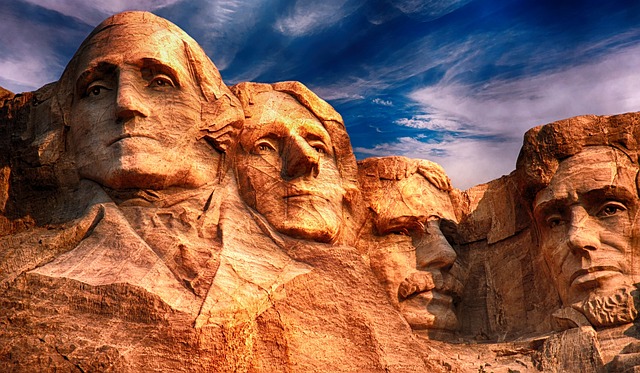The American Eagle and Flag stand as enduring symbols of the United States, capturing the essence of its heritage, values, and national identity. This article delves into the profound significance embedded within these emblems, exploring their historical roots, design elements, and evolving meanings that collectively articulate the American narrative. From the Iconography of the American Eagle and Flag to their role in shaping cultural and national pride, this exploration will offer readers a deeper appreciation for the symbols that represent the country’s legacy. Join us as we celebrate the unifying power of these icons and understand how they continue to resonate with the American spirit.
- The Iconography of the American Eagle and Flag: A Symbolic Representation of U.S. Heritage
- The Historical Significance of the American Eagle in National Emblems
- The Evolution and Design Elements of the American Flag
- The American Eagle's Role in National and Cultural Identity
- Celebrating American Pride: The Unifying Power of the American Eagle and Flag
The Iconography of the American Eagle and Flag: A Symbolic Representation of U.S. Heritage

The American Eagle and Flag are emblematic icons that encapsulate the spirit and values of the United States. The eagle, a powerful and majestic bird of prey, has long been revered in American culture for its strength, freedom, and longevity. As a symbol within the American flag, it represents the federal government’s vigilance and resilience, with its right talon clutching an olive branch, signifying peace, and its left holding 13 arrows, indicative of the nation’s readiness to defend liberty and justice for all. The 50 stars on the blue field above the eagle mirror the number of states in the Union, symbolizing the sovereignty and indivisibility of the country. Together, these elements convey a collective heritage steeped in principles of democracy, freedom, and unity.
The American Flag itself is a visual narrative of U.S. history, with its red and white stripes reflecting the original 13 colonies that declared independence from British rule, and the blue field symbolizing vigilance, perseverance, and justice. The flag has undergone modifications to include new states and, in 1960, adopted the current design with 50 stars, each representing a state within the nation. As a national emblem, the American Flag is hoisted on federal buildings, marches proudly in parades, and waves at countless homes across the country. It is a universally recognized symbol that resonates with Americans of diverse backgrounds, uniting them under a common banner that stands as a testament to their collective identity and shared history.
The Historical Significance of the American Eagle in National Emblems

The American Eagle, a symbol deeply rooted in the nation’s history and culture, has long been a representation of strength, freedom, and resilience within the United States of America. Its presence on the national flag—known as the American Flag—dates back to the late 18th century, reflecting the values and ideals upon which the country was founded. The eagle’s prominence in the emblem signifies the vigilance and watchfulness required by a nation committed to liberty and justice for all. As a national bird, the American Eagle is emblematic of the United States itself, with its broad wings symbolizing the nation’s vast territories and its ability to rise above challenges. The eagle holding arrows and an olive branch in its talons represents the nation’s readiness both for war and for peace, illustrating a commitment to defend freedom while also striving for harmony.
Throughout history, the American Eagle has been featured on various official seals and flags, including the Great Seal of the United States, which was designed in 1782. The eagle’s placement above a shield within the flag underscores the protection and security the country provides its citizens. Each element of the eagle’s depiction has been carefully crafted to convey specific attributes; for instance, the eagle’s facing towards the olive branch signifies a desire for peace, while its vigilant gaze and clutched arrows symbolize the nation’s preparedness to defend itself against threats. The American Flag, with its iconic stars and stripes, thus becomes not merely a piece of cloth but a potent visual narrative of American identity and heritage.
The Evolution and Design Elements of the American Flag

The American flag, a symbol deeply interwoven with the nation’s identity and history, has undergone significant evolution since its inception. Initially designed by Colonel William Penn, the flag featured seven stars and stripes in 1777, reflecting the thirteen original colonies that declared independence from Great Britain. Over the years, the flag has been altered a total of twenty-seven times, with the most notable changes occurring during the early 20th century when President Herbert Hoover signed a proclamation to standardize the flag’s design with forty-eight stars to represent the then-current number of states, a tradition that continued as new states joined the Union. The American Eagle, often depicted in various renditions on the obverse of U.S. coins and currency, is a motif that also graces the upper left corner (or canton) of the flag when it is displayed from a staff. This emblematic bird, symbolizing strength and freedom, faces toward the union or the field of stars, which itself represents the country’s diverse states united under one banner. Each star on the flag carries significance, with five-pointed stars chosen for their geometric simplicity and representation of the core articles of the Constitution. The flag’s stripes, alternating red and white, are reminiscent of the original flag and signify the original thirteen colonies and the unity and strive for perfection that was envisioned by our nation’s founders. Together, the American Eagle and the American Flag stand as a testament to the enduring spirit and values of the United States.
The American Eagle's Role in National and Cultural Identity

The American Eagle, a potent symbol gracing the nation’s emblem and flag, encapsulates the spirit of resilience, freedom, and strength that defines the United States. As part of the Great Seal of the United States, the eagle holds an olive branch in one talon and arrows in the other, signifying the nation’s readiness both for peace and for war. This iconic bird of prey is a recurring motif in American art, literature, and iconography, reflecting the country’s commitment to balancing its ideals with the realities of its role on the world stage. The eagle’s presence on the national emblem underscores the values of liberty and justice, which are core to America’s cultural identity.
The American Flag, often displayed alongside the image of the American Eagle, is a tangible representation of the nation’s history and values. Its red and white stripes symbolize the original 13 colonies, while the blue field with fifty stars represents each state in the union. The flag, like the eagle, has weathered storms of change and conflict, emerging as a universal sign of American pride and unity. Together, the American Eagle and the American Flag serve as a visual testament to the collective heritage and identity of Americans, reminding citizens of their shared values and the nation’s proud history. The intertwined imagery of these national symbols is a powerful emblem of American culture and its enduring legacy.
Celebrating American Pride: The Unifying Power of the American Eagle and Flag

